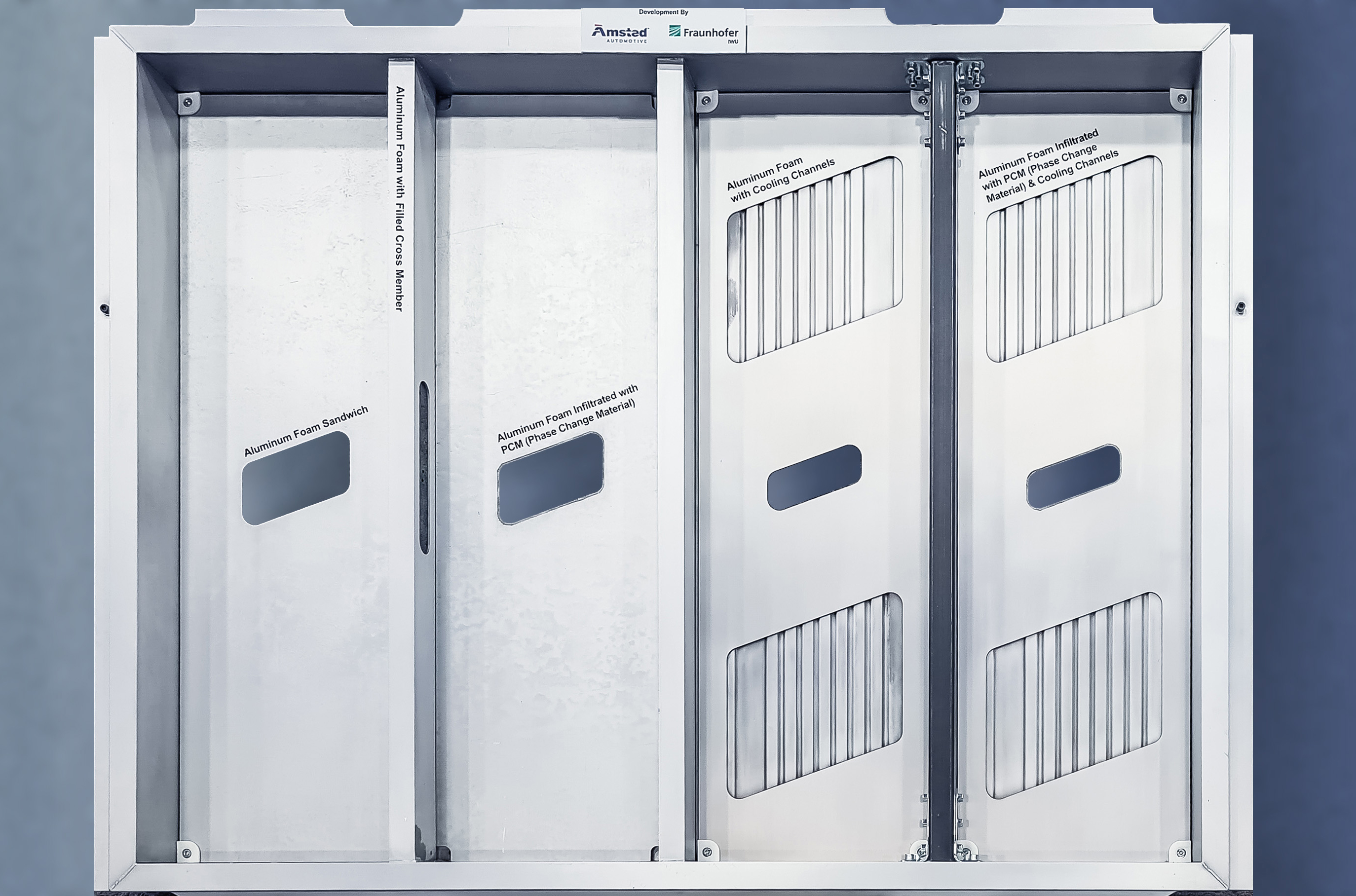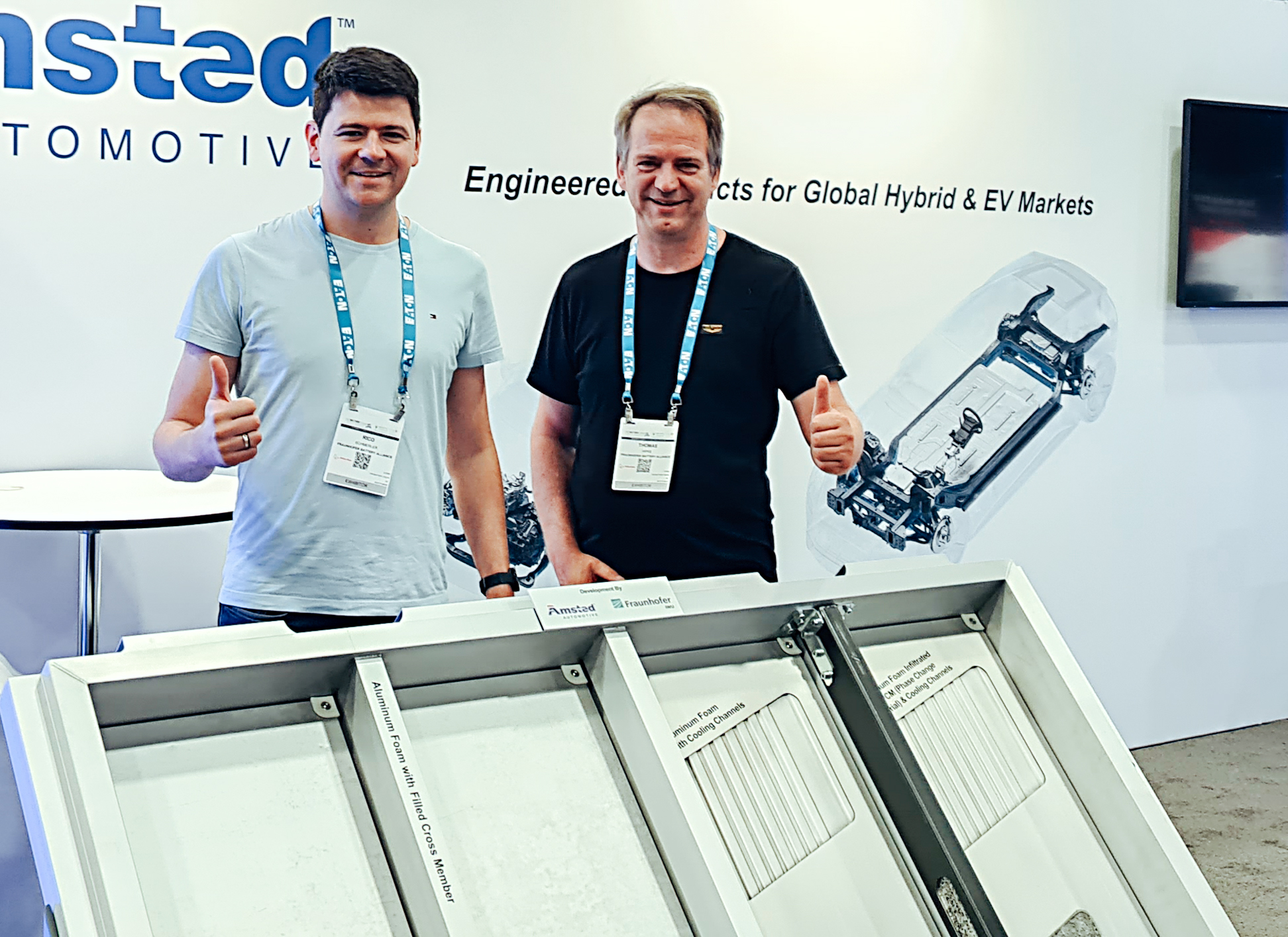Light, Rigid, Safe: Battery Housings Made from Aluminum Foam
Battery housings in electric vehicles must be impact-resistant, absorb crash energy, protect against short circuits, and be heat-resistant. Efficient heat dissipation is essential, but cells also need protection from excessive cooling. The housing must resist damage from stones and salt, fit the vehicle’s underbody, add rigidity, and, being lightweight, help increase range. Aluminum foam satisfies these requirements.



At the Battery Show North America in early October in Detroit, the Fraunhofer IWU and the automotive supplier Amsted Automotive presented an integrally designed battery housing with aluminum foam sandwiches. This is a special material structure consisting of two solid aluminum sheets enclosing an inner core of aluminum foam. Such housings can, if needed, incorporate a cooling structure or a thermal storage medium known as Phase Change Material (PCM), which stores or releases heat as it changes between solid and liquid states.
Fraunhofer IWU has successfully integrated PCM into closed-cell aluminum foam. PCM can absorb or release large amounts of thermal energy while changing its state (solid to liquid or vice versa) without significantly altering its own temperature. This makes them particularly well-suited for efficient thermal management in lithium-ion batteries.
The demonstrator presented in Detroit shows a wide range of possible serial solutions. Depending on the prioritized properties, pure AAS (Aluminum-Aluminum Foam Sandwiches), AAS with infiltrated PCM, AAS with a cooling structure, or AAS with a cooling structure and PCM can be implemented.
To ensure that battery housings made from aluminum foam are also used in mass-produced vehicles, researchers led by Dr. Thomas Hipke and Dr. Rico Schmerler are now focusing more on cost-effectiveness. A key factor in determining future manufacturing prices is the cost of raw materials. Hipke states: "We are increasingly using recycled material to produce the aluminum foam. Not only is this significantly more cost-effective, but it also greatly reduces the CO2 footprint."
 Fraunhofer Institute for Machine Tools and Forming Technology
Fraunhofer Institute for Machine Tools and Forming Technology